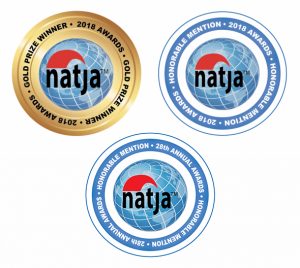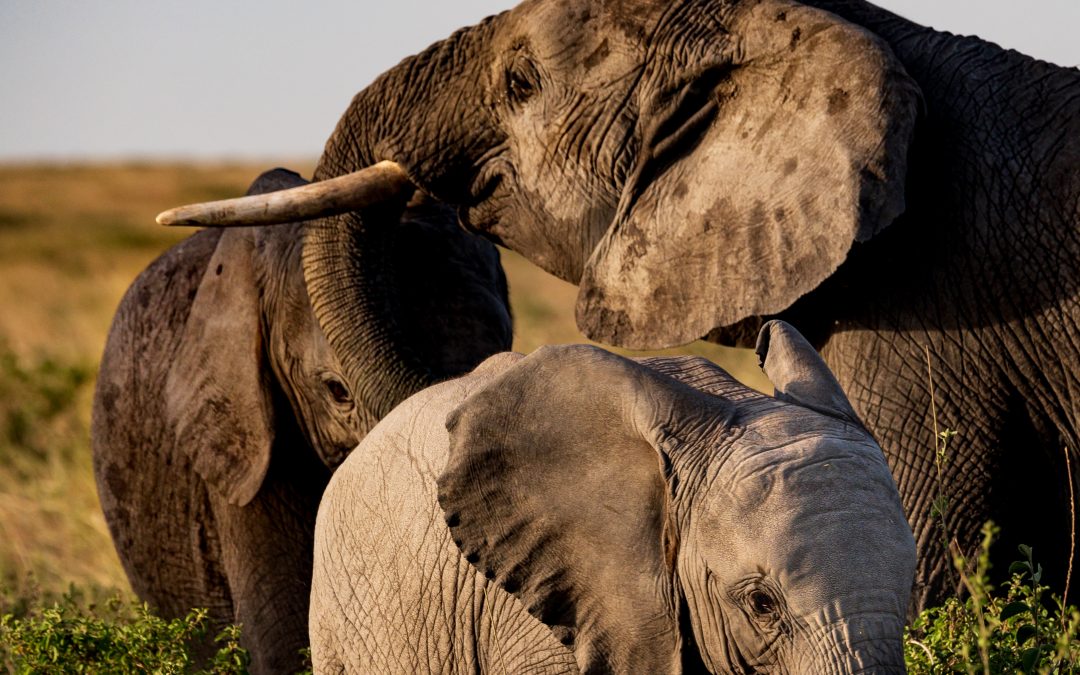
by Pat Wetzel | Jan 16, 2020 | Road Trip, The Story
A photo safari is often a once in a lifetime experience. How do you prepare? What do you need to know?
Here are eleven must knows from my experience on a photographic safari in Tanzania:
1. Monkey Business

They look so innocent!
The Sopa Lodge sits atop the ridge overlooking the Ngorongoro Crater. It is a stunning location. I’d set up one of my cameras to capture a time lapse series of the sunset. My photo backpack sat on a chair just behind me.
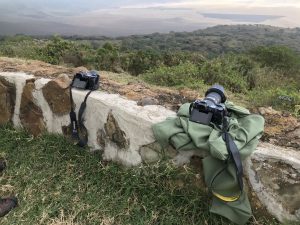
Cameras set to capture the sun setting over the Ngorongoro Crater
As I fussed with my camera, I glanced back. A baboon was sitting on the chair, happily rummaging through my backpack!
I stood tall and approached. His red beady eyes stared me down.
He did not budge.
Looking me squarely in the eye, he thrust his arm into my camera bag.
I had expensive lenses, a second camera body and even more importantly, a full XQD card from my day in the Crater in that backpack.
He could have the camera, but not the card.
I yelled; I waved my hand.
The baboon stood his ground.
Meanwhile, in the back of my mind, all I could hear was the nurse who had given me my vaccinations, asking me if I wanted a rabies vaccination.

“Rabies?” I asked. “No, I won’t need that.”
“Just don’t get bit by a monkey,” she advised me.
And now I was almost in armed combat with one.
The gathering crowd who (laughingly) sided with me finally spooked the baboon. As a final act of defiance, he looked me in the eye, reached into my pack, grabbed something and ran.
Thankfully it was not my XQD card!
Moral of the Story
I tried to save a bit of money on my photographic safari by using 64GB XQD cards (at $130 each) rather than 120 GB cards (at $210 each).

An XQD card at $210!

Don’t.
Buy larger cards. You’ll need several, but you’ll be less likely to fill them up.
Keep the card in your camera.
Keep your camera with you.
At all times.
If you put a full card in your camera bag, be sure it is in an ultra-secure location. Baboons are smart, strong, curious and persistent. Don’t give them the opportunity to dazzle you with their mischief.
2. Safari: Finding Your Purpose
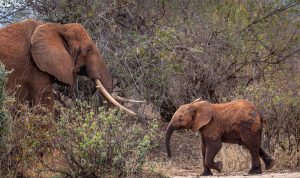
Be clear about the purpose of your trip. Photo safaris can take many forms. They may be as simple as a day trip or two, or they might involve weeks in the bush. They may be relatively luxurious, or more camping based. They may be wet or dry, depending on the season.
Why are you going on safari?
To travel?
To learn?
A bit of both?
I was on a trip focused on photo education and the trip definitely delivered that.
A case in point: Change your photographic perspective
Any good traveler (or photographer) will tell you that changing your point of view will open your world. And so it does.
I had taken some fairly unremarkable photos of some baboons, when Kristi nudged me and said, “Come on!”
We climbed up a structure surrounding a tree. The stairs and platforms were intended to provide a closer look at some of Africa’s iconic trees, but they also provided a photo perch.
With a decidedly different point of view:
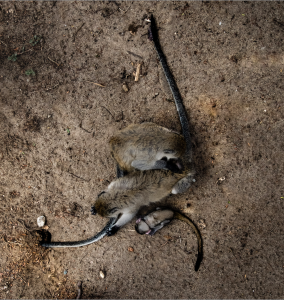
A change in one’s point of view produces a radically different picture of the world
“One’s destination is never a place, but a new way of seeing things.”
-Henry Miller
I know this intellectually. But now I own it. Traveling and studying with a world class photographer opened my eyes to so many things and motivated me to move out of my photographic rut to seek new skills and a new point of view. I will be traveling with purpose in the future, merging photo education into new adventures.
3. Choosing Your Safari Guide

Your guide will set the tone for your adventure, manage many of the details, and should have knowledge of the area.
Ask yourself:
Do you know them? Do you enjoy their company? Are they outgoing or more reserved, and which works best for you?
If it’s an educational trip, does their teaching style resonate with you? Is this someone you’ll want to spend a week or two with? How many people will be going on the trip and how many people will there be per vehicle?
For those of you serious about photography, four people per vehicle (plus a driver and guide who sit up front) is probably pretty optimal. There’s room to move around, and to stake out some territory for your equipment.
Will there be adequate time for teaching if this is your goal?
We had a very ambitious schedule, and between travel, pre-dawn departures and post sunset arrivals, I felt we could have used more time to review our photographic experiences.
But our education continued beyond the scope of the trip to a year of mentoring. That, for me, was an incredibly important part of the trip and one of the reasons I chose to travel with Kristi. The experience has opened my eyes and my world to the educational potential of traveling and learning from world class visual artists and storytellers.
4. Fellow Safari Travelers
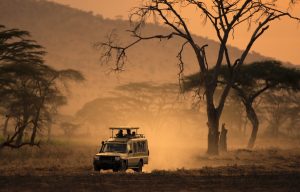
Who else is going on your photographic safari? Your travel companions matter.
Is there a broad distribution of age groups? Educational levels? Younger? Older?
My trip was less than ideal in that one of the travelers, an unemployed thirty something woman who lived at home with her father, was constantly talking about herself, how amazing she was, how educated and talented she was, how amazing her photos were and how everything in Africa related to Disney’s Lion King animated fantasy movie.
Everything.
Seriously.
And constantly.
I’ve never seen the Lion King (it’s probably a generational thing) and I was frankly appalled at the self absorption and inability to carry on what I considered to be a civilized and intelligent conversation about anything other than oneself and an animated cartoon movie.
I yearned for adult conversation.
Obviously different groups will have different cultural perspectives that may or may not mesh. It’s something to think about.
Eight people distributed between two vehicles offers more variety for interaction than just four people in one vehicle. I can usually get along with just about anyone, but I would be very hesitant to go with such a small group again without having first met my fellow travelers.
5. Dust!
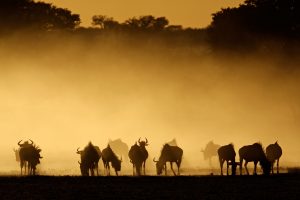
Dust!
Dust is everywhere on a photo safari in Africa. In an open vehicle, dashing through the savannah of the Serengeti, your hair will be caked in fine dirt, like a heavy hairspray. Running a comb through your hair becomes nearly impossible.
The remedy: Bring a hat.
Wear it.
Hat hair is preferable to sand encased hair any day.
6. Boots On The Ground
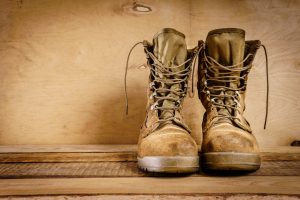
Some people wore sandals. I opted for socks and boots and I was happy with that decision. My hiking shoes would have been just fine as well.
Having a good platform for walking, carrying gear and shooting was the right choice for me. I didn’t hesitate walking through any type of terrain, and as an added bonus, my boots offered one more barrier to the omnipresent Tsetse Flies.
7. The Bugs of Safari
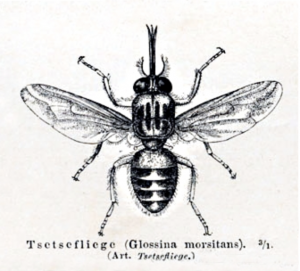
The word tsetse means “fly”. And they are everywhere.
Tsetse have been associated with sleeping sickness and are capable of carrying a variety of diseases, including malaria. They feed on your blood, and in doing so, spread disease.
I was on anti-malarial medicine throughout my trip, but still wanted to avoid bites in general. Long sleeves, socks and boots helped. As did insect repellent. I used a non Deet product that worked well, but I did have a Deet based spray as well, just in case.
Tea tree oil offered a wonderful relief to any bug bites and seemed to inhibit their curiosity as well. And it smelled much better than bug spray! Definitely have some Tea Tree Oil in your African travel kit!
8. Emergent and Urgent
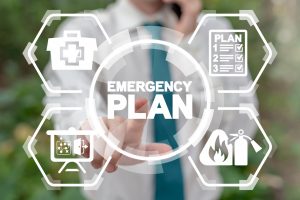
Before leaving I seriously considered buying medical evacuation insurance. Something in back of my mind kept needling me. But my Delta travel insurance had a provision for $25,000 and surely I wouldn’t need it.
After all, I wasn’t climbing Kilimanjaro or anything.
At Lake Manyara, I fell (hard) on a slick concrete floor. I would later find out that I broke my tailbone (coccyx). The injury was quite painful, but could have been much worse.
This incident made me realize that getting out of Africa hurt or disabled, would have been daunting, to say the least.
There is little to no modern medical care in most areas.
There may or may not be communication.
And transportation is limited.
Plan accordingly.
9. Safe Sojourns
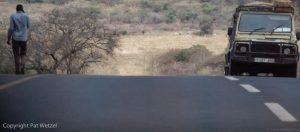
I always felt safe in Africa, but I traveled in a tourist bubble.
I was picked up at the airport by our guide, Gift; stayed in high end lodges; and generally had little interaction with daily life. Everyone I met was terrific, but it was a somewhat scripted experience.
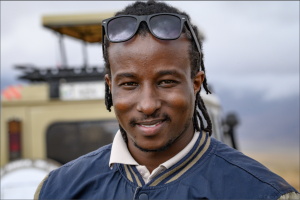
Gift, our talented driver and safari guide
I am someone who likes to wander and court some serendipity. Next trip, I want to figure out how to travel a bit more, perhaps down to the coast and to Zanzibar, and get a bit more of a cultural feel for Tanzania. To do that, I have to figure out how to haul some pretty heavy and expensive photo and electronic gear, without inviting any unplanned adventures.
10. Travel Plans and Schedules
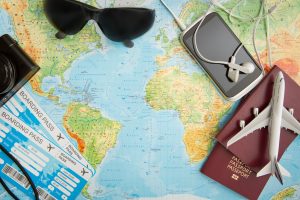
I traveled for about 30 some hours non-stop. The three to four hour layovers in both Atlanta and in Amsterdam gave me a chance to freshen up, stretch and walk.
I had considered stopping in Europe for a day or so, just to break up the trip, but I think the marathon 30 hour flight was the way to go. I was so exhausted by the time I got to Tanzania, that I slept soundly and adapted to the local time without missing a step or losing a day. And a light hike around Lake Duluti and an easy schedule my first day was just perfect for allowing me to acclimate.
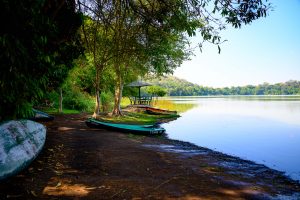
Looking down Lake Duluti
On the way home, my section of the flight was fairly empty and I was actually able to stretch out across several seats and sleep. Delta provided terrific service and good (airline) food too. Kudos to Delta for all aspects of the trip.
11. Pack Light for Safari
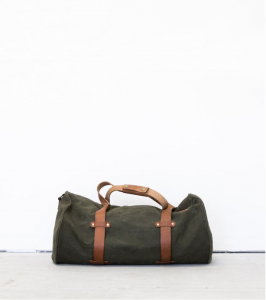
Laundry service is inexpensive and available at most lodges. My clothing packing list worked well. I needed warm clothes on occasion, and a light jacket some mornings.
My photo packing list was perfect, except for the tripod and monopod, neither of which I used. Both added weight and bulk to my luggage and I had to haul them from place to place.
If you’re going on a typical safari, the reality is that from a vehicle, a bean bag is your best friend. I filled mine with rice from a store in Arusha. When I was ready to leave, I gave the rice to Gift (our driver) to pass along to someone else.
And empty, the bean bag collapses for packing and weighs nothing.
***
An African photographic safari is an amazing experience. Perhaps Beryl Markham said it best:
“Africa is mystic; it is wild; it is a sweltering inferno; it is a photographer’s paradise, a hunter’s Valhalla, an escapist’s Utopia. It is what you will, and it withstands all interpretations. It is the last vestige of a dead world or the cradle of a shiny new one. To a lot of people, as to myself, it is just home.”
–Beryl Markham, West With The Wind
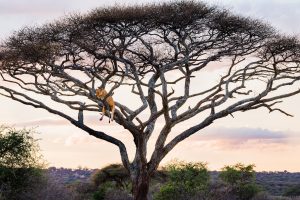
Tree climbing lioness settling in for the Serengeti night
Like This Post? Pin It!
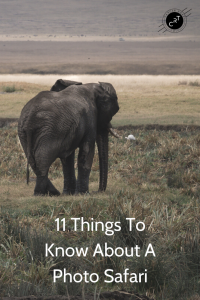
More Reading And Photos on a Photographic Safari in Tanzania
Cats
Photographing Wildlife in Lake Manyara
Drive Bys
Elephant Love
Tanzania Photo Safari: Lake Manyara
Kili and Culture
Lake Duluti:
Settling Into Tanzania
An African Photo Safari With A Nikon Ambassador
Safari Clothes: Packing for Safari
An African Photo Safari: Photo Equipment Packing List
Visas and Vaccinations for Tanzania
If you’re interested in learning more about photography (or cooking or film or any number of topics) check out MasterClass All-Access Pass for on-line excellence:

This post contains affiliate links and I will be compensated if you make a purchase after clicking on my links.
[et_bloom_inline optin_id=”optin_10″]
What is #CancerRoadTrip and how did it come to be? Read this post to get the backstory!
Follow me on Twitter, Pinterest, Instagram, and at Anti-Cancer Club. Connect with me! I may need a place or two to stay along the way!
Follow my blog with Bloglovin
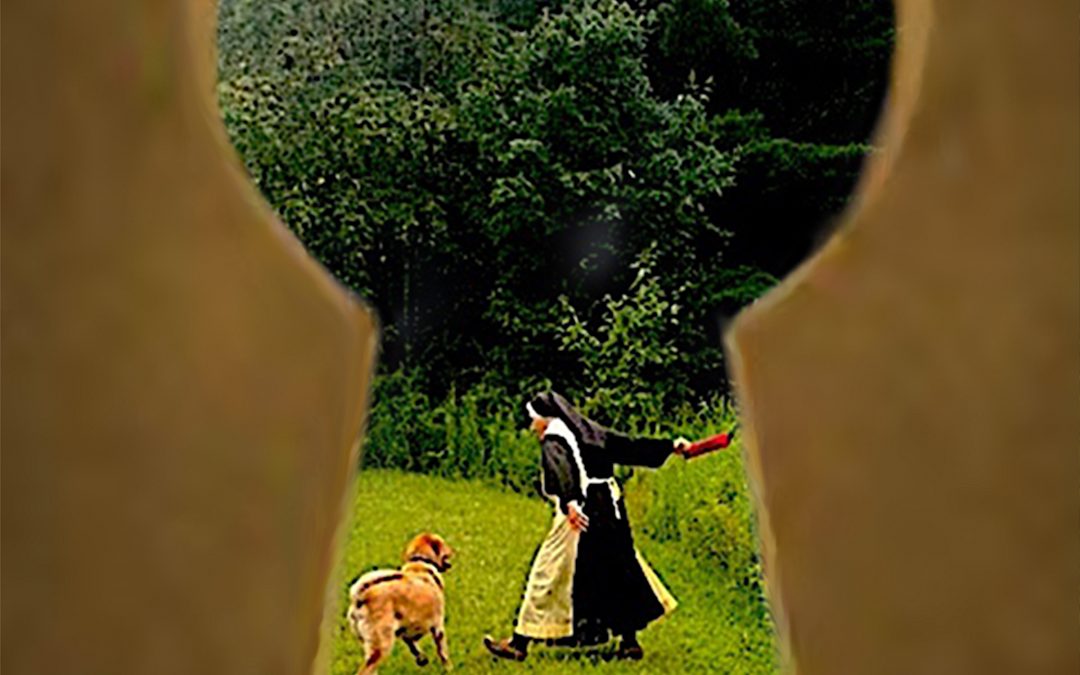
by Pat Wetzel | Jan 7, 2020 | Guest Post, Road Trip, The Story
This guest post by Bev Thompson combines the best of travel, family and faith in a most unexpected set of circumstances, in a retreat at a Benedictine Monastery.
Faith Has A Voice: Serendipity – Stillness – Strength
by Bev Thompson
The idea of ‘living forever’ no longer lives in the darker recesses of my mind, it’s now a bright light, perhaps the same light that haunts us with stories of those about to cross over.
Cancer has changed my perspective and my life.
As has a new puppy .
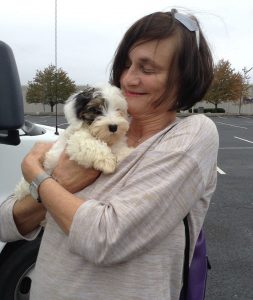
A new puppy
Pip appeared at a most opportune time, just a year after my beloved Mollie had died. A phone call from a breeder:
“I have just the Sealyham Terrier puppy for you; small; perfect conformation; can have babies; can be a champion, if you would like.”
I half listened, none of what she said mattered, except the word – puppy. My heart was pumping again. The day I held that pup in the palms of my hands was my most joyous moment in a very long time. Time stood still that day as I held her close – just as it did a few months later.
Pip, Cancer, and a Benedictine Retreat

Pip
I had turned upon waking to catch Pip from falling off the bed. She was only 7-months old and growing. As I reached for her, that’s when I felt it. A lump, a cyst – no, a lump! No it can’t be, it will go away. Far away – but it didn’t.
Two weeks after diagnosis, I had surgery to remove a healthy portion, or perhaps not so healthy portion, of my left breast. I was alone. I had no close family or support system.
After the surgery, I felt pressured to say yes to everything the white coats ‘in the know’ hurriedly prescribed. But their lineup of statistics by way of line graphs and percentages, longevity and recurrence wasn’t resonating with me.
I was in denial but not so far gone that I couldn’t advocate for myself.
My surgeon gave me all the options and supported my decisions but felt (yes, a surgeon with feelings) obligated to give me the statistics about my lump.
My general physician wouldn’t let me go under the knife until I got my A1C down and a prick to 90 for my diabetes.
Done.
My radiologist had me sign on the line with a witness so many times; my hand went into spasms. Inter-operative radiation was an option I wanted.
My oncologist?
Yes, you can cut me; yes you can burn me, but poison me? I balked and bucked, and whinnied – Noooo! My oncologist didn’t take the news well, but he documented The ‘No’ in silent disagreement. Then left me alone – nothing more to say.
My therapist?
She came after the facts. All my decisions had been made. No regrets. She agreed.
Cancer changes your life.
Your trajectory – Your friends – Your plans – EVERYTHING!
There is no going back to the way you were.
The revelation is that time is of the essence.
Where do I go from here?
How?
When?
The clarity that does come with the “C” word is . . . NOW!
Staying in today – is what I am left with. Today takes priority. Tomorrow can wait and Yesterday holds no ceremony over me any longer.
After declining chemo, my faith kept coming up. Will prayer take over where medicine has no guarantees? Will my faith prolong my life’s journey? My calling?
Needing solitude and a quiet place to reflect I started looking for a place I could take myself, and of course, Pip, my pup.

Pip, in the doorway
What type of retreat did I want? It had to include Pip.
By sheer coincidence, which some say is God’s way of remaining anonymous, a pet-friendly place popped up online. I put on my reading classes to make sure I wasn’t having an out-of-body experience.
The Monastery: A Benedictine Retreat

The Benedictine Retreat
Cancer brought up a need to reckoncile with my faith; a faith that called to me. A spiritual adventure was called for and a Benedictine Monastery I stumbled upon on the web seemed like the perfect place.
Pip and I were the only guests at the hermitage. We had the whole house to ourselves. Except of course for three Benedictine sisters and one yellow lab named Monk.
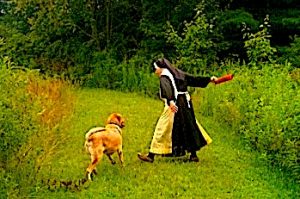
Pip, Monk and the sisters at play
A basket of fresh food appeared on my kitchen table each morning and evening and chapel was only a path’s walk away. The hospitality was like none other I had experienced. I am Protestant, yet the Benedictine Order welcomed me as a sister-in-faith.
When I asked the sisters what I should pack, Sister Sheila replied, “floating fetch toys that Monk can retrieve from our pond.”
“And we so look forward to meeting your, Pip,” she added.
My heart melted.
What a week it was. Contemplation, prayer, community, hospitality, generosity and – my faith restored; a community that was new to me, yet not, growing up amongst the faithful from birth.
We laughed, we played, we shopped, went sightseeing.
The sisters never asked why I had come. Never questioned my faith or the basis of my beliefs. Through the serendipity of an internet search, I reached out and asked for a week of sheltering and they took me in.
As the week came to a close, I asked to gather with the sisters to tell them my story and ask for their prayers.
“Bev, we have been praying for you all week long and will continue with prayer – ‘healing prayers’ each day to sustain you as you continue your life’s journey.”
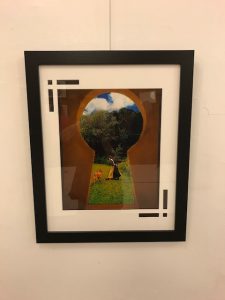
A framed photo from the Benedictine retreat
Our stories, as we look back on our lives, bring up the miracle of randomness, God’s anonymous moments. It made little sense miraculously Pip entered my life when she did.
It made no sense that a faith outside my own would embrace me.
It made no sense that Transfiguration Monastery would enter my life through an Internet search.
No one gets through life alone. God promises us that the ending is worth waiting for – in life – in death – through the magical power of faith.
Serendipity – Stillness – Strength – a perfect threesome. The Father, The Son, The Holy Ghost; And Three Sisters. Incredible Revelations Come in 3’s – and a dog named Monk.
“Seek and you shall find. Ask and it shall be given to you.”
The Power of Faith – God’s Medicine.
Like This Post? Pin It!
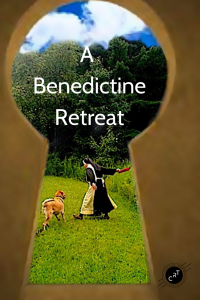
More Guest Posts
Traveling To Heal: 83 Days On TheRoad
Visiting the Galapagos
One Cancer Patient’s Ultimate Travel Bucket List
Seven Ways To Survive The Holidays While Grieving
Luxor Egypt
An Artist’s View of Luxor, Egypt
If you’re interested in learning more about photography (or cooking or film or any number of topics) check out MasterClass All-Access Pass for on-line excellence:

This post contains affiliate links and CancerRoadTrip will be compensated if you make a purchase after clicking on my links.
[et_bloom_inline optin_id=”optin_10″]
What is #CancerRoadTrip and how did it come to be? Read this post to get the backstory!
Follow me on Twitter, Pinterest, Instagram, and at Anti-Cancer Club. Connect with me! I may need a place or two to stay along the way!
Follow my blog with Bloglovin

by Pat Wetzel | Dec 27, 2019 | Guest Post, Road Trip, The Story
Grief and the holidays sadly go hand in hand for many of us. Memories and loses coincide just when we are supposed to be happiest.
Kristyn Lohoff, who lost her husband to cancer, shares some of her strategies for this time of year.
***

The holidays can be a difficult time.
When the holiday season arrives many people find themselves busy planning family gatherings, preparing meals, wrapping gifts, baking cookies, and attending different holiday programs. For people who are living with grief from the loss of a loved one, the holidays can become an overwhelming time. I have learned a lot about how to survive the holidays while grieving.
Grief and The Holidays
I lost my husband in October of 2017, and the first holiday season without him came quickly. Just two months later I was faced with how to celebrate without him. I actually lost seven family members in 26 months, with my husband’s death being the final one. Two other losses were my mother and father-in-law. They had always come to our home over the holidays and that first year without them left my house feeling especially empty.
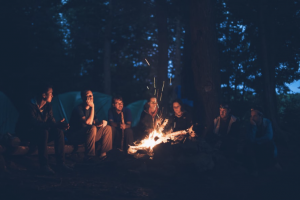
We always gathered around a bonfire
Our tradition of a family gathering with an evening bonfire and a gift exchange was something that I had no motivation to do that first year, but it was something that was very important to all of my children. I found a way to get through that first holiday while grieving.
Surviving the holidays while grieving was so emotionally difficult for me, that I needed two days to recover and be able to get out of bed once again. In spite of this, I felt that the first holiday season was a victory! Here are seven things that I have learned because of my own experiences
Allow Yourself to Feel Without Guilt
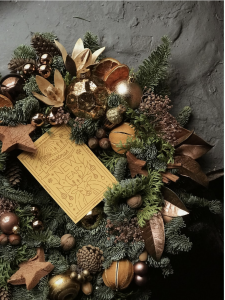
A New Year will bring a new life, different from what you’d imagined.
The holidays are an emotional time. It is Ok if you start to cry, even if you are in line at the grocery store!
You are missing someone special.
Your new life is now very different from what you were used to, it is different from what you envisioned for yourself.
Allow yourself to feel what you are feeling.
Giving yourself permission to let those emotions out will discharge some of the pain so that healing can happen.
Plan Ahead
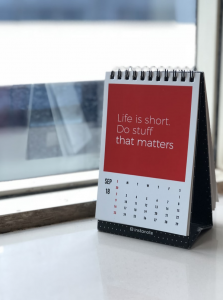
For the first holiday after losing my husband, I was overcome by the intense early grief that I was feeling and there was no way to really plan ahead. Thanks to the help of my adult children, we were able to keep things for our family celebration similar to what they had been in the past. This was very important to them and to my younger daughters.
During my first year as a widow, I learned how to use a bullet journal to help me be prepared and feel less stressed by the responsibilities of daily life.
I used it to plan our second holiday season without my husband. By taking time to reflect about how I wanted to holidays to go, I was able to plan when to do the things that I wanted.
My second holiday season looked very different from my first. I actually took my family on a road trip and we experienced the holiday season in New Orleans, LA while staying in our RV. Being away from home felt good, and that year I didn’t need two days afterwards to recover in bed.
Improvement!
Keep Things Manageable

Lists help us prioritize busy holiday activities
Make a list of all of the things that you feel must be accomplished.
Then, reflect on the things that you truly want to do and the things that you feel you must do.
Do you really need to send holiday cards to every friend or family member you know?
Do you really need to send any?
Let some things go, it’s OK! Trim your old list of things you felt needed to be done down to a new list of only a few “Must Do” items.
It’s OK if you don’t participate in the cookie exchange this year.
It’s OK if you change traditions to make things easier, these changes may make the holiday better for everyone!
Be honest and tell people what you DO want to do for the holidays and what you DO NOT want to do.
Find Time For Yourself

Find time to be alone
Make sure to plan some time for yourself.
Give yourself time to rest. Go for a walk. Listen to music. Take a nap.
Spend time journaling or drawing.
Plan a getaway.
Sit in a coffee shop.
Write a list of ten things that you would like to do for yourself during the holiday season. Write anything that comes to your mind and then select the top three from your list and make arrangements for those things to happen.
If you plan something for just you, especially after the holiday is over, it may give you something to look forward to. This can help you get through some difficult moments.
Find A Way To Honor Your Loved One
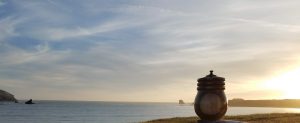
Promise kept. John at the Pacific Ocean.
It may be helpful to find a way to honor and include your lost loved one into part of your celebrations.
You could create a memorial table with pictures of those who are not with you anymore.
You could set a spot at the table for your loved one, cook a favorite dish, or light a candle to remember them.
You could create a memorial decoration or ornament in your loved one’s memory.
You may like to set aside a time to visit their gravesite and leave holiday decorations there.
Talk About Your Loved One
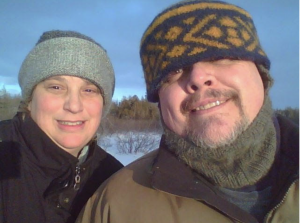
Ready to travel!
It can be helpful to talk about the person who has died as a way to survive the holidays while grieving. Many times people are afraid to bring up the person’s name, but talking about them, saying their name and sharing memories can be very helpful.
By sharing stories over and over, the pain of the loss may lessen. It’s another way to let the pain out and begin to feel joy over time.
Travel and Healing From Grief
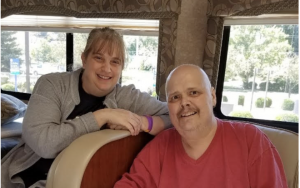
Kristyn and John in their RV
Looking back, it seems that my mother first taught me that travel was a helpful way to deal with grief.
My father died when I was seven, and a couple of months later my mom took our family to DisneyWorld. My parents had been putting money away for this trip for many years, and now, with one less person, it would cost less and she could then afford the trip. Off to DisneyWorld we went!
Over forty years later, I still have vivid memories of that trip and how good it felt to be away from our home where my father had died. For years afterwards, my mother planned trip after trip after trip.
I grew up thinking that she just liked to travel, but once I became a widow myself, I understood the power of travel to heal a grieving soul.
After losing my mother, father-in-law and my husband in a little more than two years, I instinctively began planning a trip that I hoped would bring me and my young daughters some peace. Losses so big would need a monumental trip, and that is exactly what I planned.
Seven months after my husband died I packed up my motorhome and began an epic trip that would log 13,800 miles, included 22 national parks, and provide us with the opportunity to catch up with family and make new friends.

North Rim, Grand Canyon
I created an itinerary of places to go that had been on the bucket list that my husband and I had created together. The trip became a mission for him.
But, as the days went on, I found out that the trip was really about my healing, and the healing of my daughters.
I first noticed this after driving for days from my Wisconsin home, stopping at different places until I had literally run out of road and found myself staring out at the Pacific Ocean in northern California. It was breathtaking.
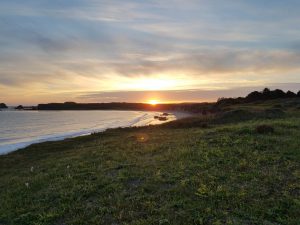
The Pacific Ocean
I sat on the beach watching my girls run around and investigate and just letting my mind wander. I cried, but my soul was also filled with the calm beauty of nature, and I felt a piece of joy seeping back into my life.
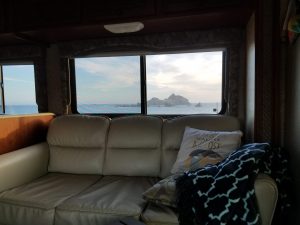
All who wander are not lost: A view from the RV
I did some research and learned about other people who had turned to the powers of nature to heal their broken souls. Theodore Roosevelt lost both his mother and his wife on the same day. Shortly after, he went out to the American West for many months in order to find a way to live with those losses. Nature and travel provided his soul with some comfort, and he later devoted much of his presidency to protecting lands for future generations.
John Muir, from my home state of Wisconsin, went out to California and found the beautiful Beauty in the Yosemite Valley. He later created the Sierra Club and fought for decades so that Yosemite could become one of our first national parks. He later worked to help protect the Grand Canyon and Petrified Forest as national parks.
I have been to over twenty national parks and each time I spend time sitting and letting nature soothe my soul. I enjoy finding out what is special and unique about each park. I let that special thing seep into my body and give me strength to face a new day.
Grief is a marathon.
Whether you are grieving the loss of a loved one, the loss of a pet, the loss of relationship, or the loss of a lifestyle, grief is a daily marathon that we must find the tools around us which will help us to continue moving on.
On my epic RV road trip, I found myself sitting off of a trail along the edge of the north rim of the Grand Canyon without anyone near me.

At the rim of the Grand Canyon
I slipped my coffee and stared at the beauty in front of me. And I felt like I could go on with my life.
Travel is healing. Nature is healing. Putting the two together becomes amazingly powerful.
Find your way to survive the holidays while grieving. Safe travels and happy holidays!
Kristyn is a teacher by day and grief and travel expert every other moment of the day. She lives with her two youngest daughters, a dog and a cat and her motorhome affectionately named CeeCee in Northern Wisconsin. She hopes to find a way to live full-time in her RV. You can visit her website and learn more about her adventures in surviving grief by visiting her website at www.ourclassceelife.com
More Reading on Cancer and Travel
Traveling To Heal: 83 Days on the Road
Visiting The Galapagos
Good Travel Books For The Holidays and All Days
One Cancer Patient’s Ultimate Travel Bucket List
Like This Post? Pin It!
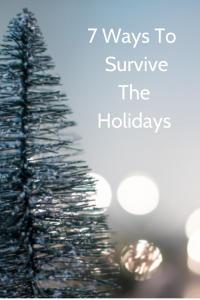
If you’re interested in learning more about photography (or cooking or film or any number of topics) check out MasterClass All-Access Pass for on-line excellence:
 [et_bloom_inline optin_id=”optin_10″]
[et_bloom_inline optin_id=”optin_10″]
What is #CancerRoadTrip and how did it come to be? Read this post to get the backstory!
Follow me on Twitter, Pinterest, Instagram, and at Anti-Cancer Club. Connect with me! I may need a place or two to stay along the way!
Follow my blog with Bloglovin Masterclass YouTube https://www.youtube.com/playlist?list=PL-azJBgG8XSk6z8Ov_mxdczZKkiTyE9cv Blog Lovin’ Follow my blog with Bloglovin

by Pat Wetzel | Dec 15, 2019 | Road Trip, The Story
Good travel books cover new terrain. It may mean mean touring the world. Or perhaps it means looking within.
In either direction, travel always offers adventure. Here is a bit of literary adventure in both directions.
Books for Traveling Within
The journey within oneself is at least as interesting as any world wide voyages. Her are some of the travel books that have been along on my journey:

 I first saw Bernie Siegel many years ago at Yale. He was speaking to an audience of surgeons who, to say the least, didn’t believe in anything that didn’t include a scalpel.
I first saw Bernie Siegel many years ago at Yale. He was speaking to an audience of surgeons who, to say the least, didn’t believe in anything that didn’t include a scalpel.
But Bernie has had the last laugh. Science is finally coming around to his prescient thinking about the power of love and the power of our minds to influence our health and healing.
This book is a classic for a reason. Anyone would be delighted to receive this as a gift, any time of the year.

 The Power of Now has been one of the most influential books of my life. With a great deal of practice on my part, it has shown me that the present moment is what counts. Not your worries; not your words. Just NOW.
The Power of Now has been one of the most influential books of my life. With a great deal of practice on my part, it has shown me that the present moment is what counts. Not your worries; not your words. Just NOW.
For your life’s travels, this book is a companion you won’t tire of.


This is a book I bought long ago, and it’s accompanied me on many travels. Zukav looks at our interactions from a perspective of energy. And when you start thinking in these terms, it provides a trail map for all your travels. This is truly a good travel book for every soulful adventure.

 Joe Dispenza’s story is amazing. He was told he’d never walk again after a horrific biking accident. But using intense visualization he healed a broken back.
Joe Dispenza’s story is amazing. He was told he’d never walk again after a horrific biking accident. But using intense visualization he healed a broken back.
With a scientific bent, he looks at the power of our minds in our daily life and the power we have to heal. He also goes into some fascination meditation technques (that are just mind blowing!).
Love this book. Check it out!

Jim Gordon is someone I’ve admired for many years. He is a Harvard trained psychiatrist who travels the world helping people heal from trauma. He is also the founder of the Center for Mind Body Medicine.
The Transformation is a book that has resulted from Jim’s years of study and teaching, and from his travels across the globe, into war zones and other disaster areas. In this book, he encourages each of us to look within to heal, and he provides the tools to pursue the journey.
I was fortunate enough to interview Jim a few years ago. You can watch the interview here. And if you’re interested in becoming involved in his project, check out cmbm.org

I am currently reading this book and it is a must read. Dean Shrock has oodles of sources, some of which I’ve read (Like Molecules of Emotion by Candace Perth) and others that I haven’t.
This is an excellent book drawing from Dean’s decades of cancer care and his careful research. I heartedly recommend this and all the books on this page.
Good Books For Travel
And then there is the wonderful adventure of travel. The world is a big place; where to go?

 1,000 Places is a classic and one that should live on your wanderlust bookshelf, or on your phone. So many ideas! Want to visit World Heritage Sites? European capitals? Asian temples?
1,000 Places is a classic and one that should live on your wanderlust bookshelf, or on your phone. So many ideas! Want to visit World Heritage Sites? European capitals? Asian temples?
All this and so much more. This is a great place to start your travels. A good travel book for all times.
Travel, for me, is also about history. And in that vein, both fiction and non-fiction offer a chance for travel. A few of my favorites:
 Long before I visited Africa, the stories of British East Africa called to me. There was Isak Dinesen’s Out of Africa, but for me, the book of that era was always West With The Night.
Long before I visited Africa, the stories of British East Africa called to me. There was Isak Dinesen’s Out of Africa, but for me, the book of that era was always West With The Night.
Beryl Markham was an extraordinary woman, pilot, and adventurer. Many years ago, I came across this book and read it again and again. I still go back for the vivid prose. Here’s an example:
“Africa is mystic; it is wild; it is a sweltering inferno; it is a photographer’s paradise, a hunter’s Valhalla, an escapist’s Utopia. It is what you will, and it withstands all interpretations. It is the last vestige of a dead world or the cradle of a shiny new one. To a lot of people, as to myself, it is just ‘home.”
An African adventure in time and space. A must read.


This is a classic for a reason. And an international best seller. It took me many years before I read this, and it’s now one of my favorite travel books.
Santiago, an Andalusian shepherd boy, yearns to travel. So he does. And along the way, he finds himself. A good travel book indeed!


One of the most heart warming reads of all time, chronicling Peter Gethers global travels with his Scottish Fold cat, Norton. Part travel, part adventure and all heart.

 No travel book list is complete without the wisdom of Dr. Seuss. I just love this book. It starts:
No travel book list is complete without the wisdom of Dr. Seuss. I just love this book. It starts:
“Congratulations! Today is your day. You’re off to great places. You’re off and away!
You have brains in your head. You have feet in your shoes. You can steer yourself any direction you choose.”
And so starts any great adventure.
We are giving healing journeys to people to discover their world anew after cancer treatment. And we’ll be capturing it all on film so that you can share in the adventure.
Seven Travelers, Seven Stories, One Bucket List Location
Be a part of the project. Click here to learn more.
And be sure to sign up on our mailing list to stay in the know about the film project, our travels and so much more!
Like This Post? Pin It!

If you’re interested in learning more about photography (or cooking or film or any number of topics) check out MasterClass All-Access Pass for on-line excellence:
 [et_bloom_inline optin_id=”optin_10″]
[et_bloom_inline optin_id=”optin_10″]
What is #CancerRoadTrip and how did it come to be? Read this post to get the backstory!
Follow me on Twitter, Pinterest, Instagram, and at Anti-Cancer Club. Connect with me! I may need a place or two to stay along the way!
Follow my blog with Bloglovin
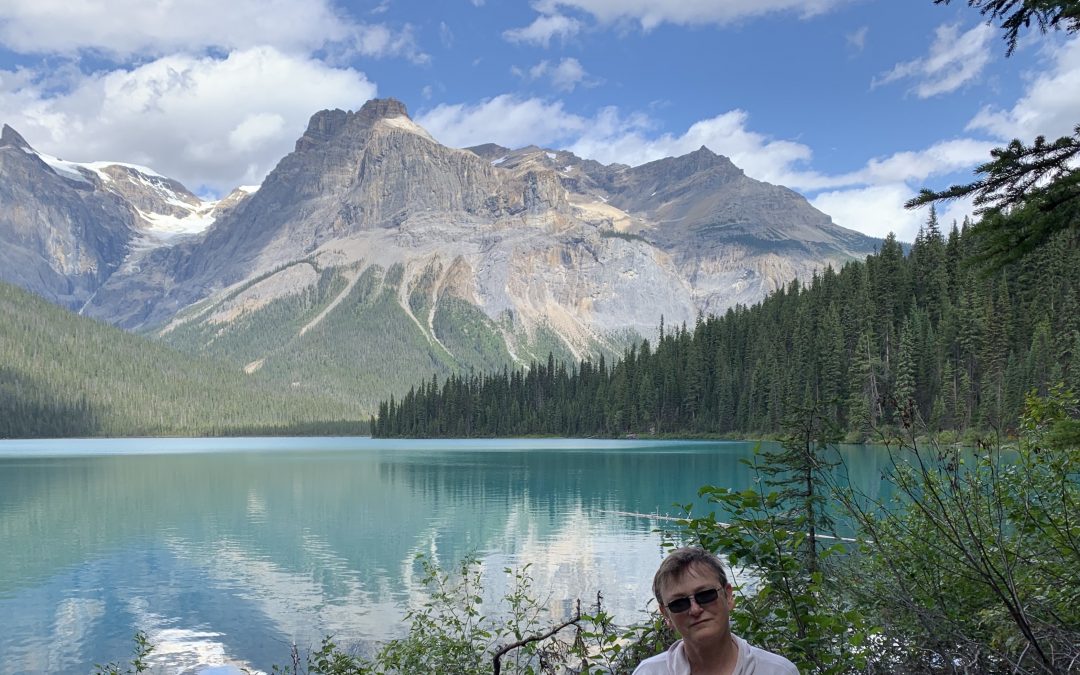
by Pat Wetzel | Dec 12, 2019 | Cancer, Guest Post, The Story
What’s an ultimate travel bucket list? Psychologist and award winning author Robin McGee (The Cancer Olympics) shares her perspective on travel, healing and cancer.
Her recent travels, with and in spite of cancer, include Ireland, France, Italy and a transcontinental North American road trip.
Fill Your Bucket
When I learned my cancer had recurred, I was only weeks away from a trip to Ireland with my three sisters. That trip had a spiritual significance to me, as while the four of us helped our parents through their deaths the year before, we promised each other we would go. My Dad was from Belfast, and we had heard about it our whole lives. It meant the world to me to go, seeing as it might be my last trip ever.
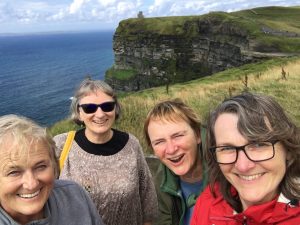
Robin (second from right) wit her three sisters in Ireland
My cancer doctors were understanding. They knew my disease might be inoperable, so they kindly delayed the titanic chemotherapy until the day after my return. So my sisters and I went for two weeks. I loved every minute. Cancer dread hovered at the edges, but I was able to focus and absorb the staggering beauty of that jewel of an island. I saw the green fields my father had told me about. I met relatives. I drank Guinness. The trip gave me a fount of joy to draw upon as I faced my devastating treatments.
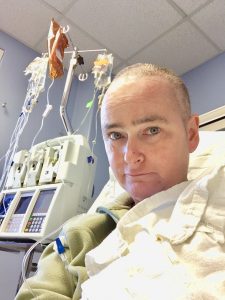
Months of devastating chemo ensued
And devastating they were. Months of brutal chemotherapy followed by a 12-hour surgery followed by more harsh chemo. Hideous mind-bending surgical complications, followed by months of treatment away from home, followed by another 13-hour surgery, followed by more treatments.
And where was travel in all of that mix? Sadly, the cancer could not be fully excised, as a biopsy revealed cancer cells deep in the pelvic sidewall. My time is limited. So I embraced travel as a way to have quality of life for the time I have remaining.
In July of 2018, I was in a wheelchair due to chemo side effects. Nevertheless, I went to France on a river cruise with family.
While everyone else was eating the gorgeous French food, I was having the consume.
While others could walk the cobblestone streets, I jounced and vibrated along in my chair.
And yet, the glorious and poignant history, the awe-inspiring Cathedrals, and the peaceful Seine, and the breathtaking art were all absorbing.
If one is going to feel unwell, one may as well feel unwell in Paris!
I recovered some money in the medical malpractice lawsuit that followed the heinous events described in my 2014 book The Cancer Olympics. The funds allowed me a truly joyous bucket-list opportunity – to rent a villa in Tuscany for two weeks and invite my six siblings and their spouses.
This time, I was well enough to walk (and more importantly, EAT). It brought tears of elation to my eyes to see my family enjoying the place and each other, to see them enraptured by the art and the vistas, and to celebrate my continued survival.
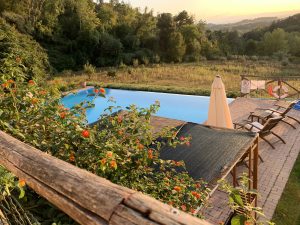
A Tuscan Villa, complete with pool
Finally, my treatments ended this past spring (2019). I could start mending. So my husband and I traveled across Canada in our 18-foot trailer, a journey which I reacted to in my blog integrating cancer with famous songs. The journey took three months, during which we opened our souls to the spectacular landscapes and fascinating stories of my home and native land.
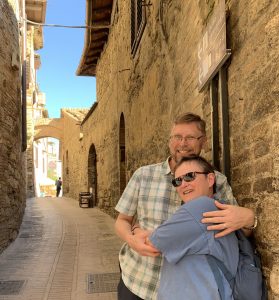
Robin with her husband
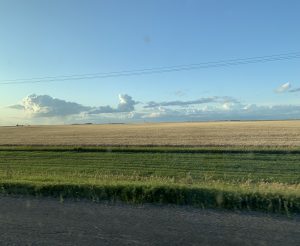
A windswept praire in central Canada
On a windswept Prairie I saw a hawk land on a fencepost. He settled in majesty, scanning the horizon as hawks have done for millennia. It was an instant, and yet it was forever.
As I watched him, all at once, the vastness and infinitude of nature descended into my mind. I realized: I am nature, I am culture, I am history.
Civilizations and even landscapes pass away, as we all must.
Coming to terms with incurable cancer means facing and accepting our own impermanence.

The vastness and infinitude of nature
Travel underscores those lessons.
We must treasure family, place, and experience. So much of life is wonderous.
Fill your bucket, fill yourself.
***
What’s your ultimate travel bucket list? Could it be an all expense paid healing retreat? Click here to learn more.
More Reading On Cancer, Travel and Healing
Traveling To Heal: 83 Days on the Road
Thoughts on the Metaphor of a Road Trip
Traveling The Timeline Of Now
Visiting the Galapagos
Healing Travel For A Better Matrix
Like This Post? Pin It!
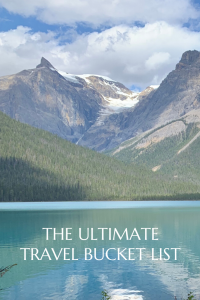
If you’re interested in learning more about photography (or cooking or film or any number of topics) check out MasterClass All-Access Pass for on-line excellence:
 [et_bloom_inline optin_id=”optin_10″]
[et_bloom_inline optin_id=”optin_10″]
What is #CancerRoadTrip and how did it come to be? Read this post to get the backstory!
Follow me on Twitter, Pinterest, Instagram, and at Anti-Cancer Club. Connect with me! I may need a place or two to stay along the way!
Follow my blog with Bloglovin



































































